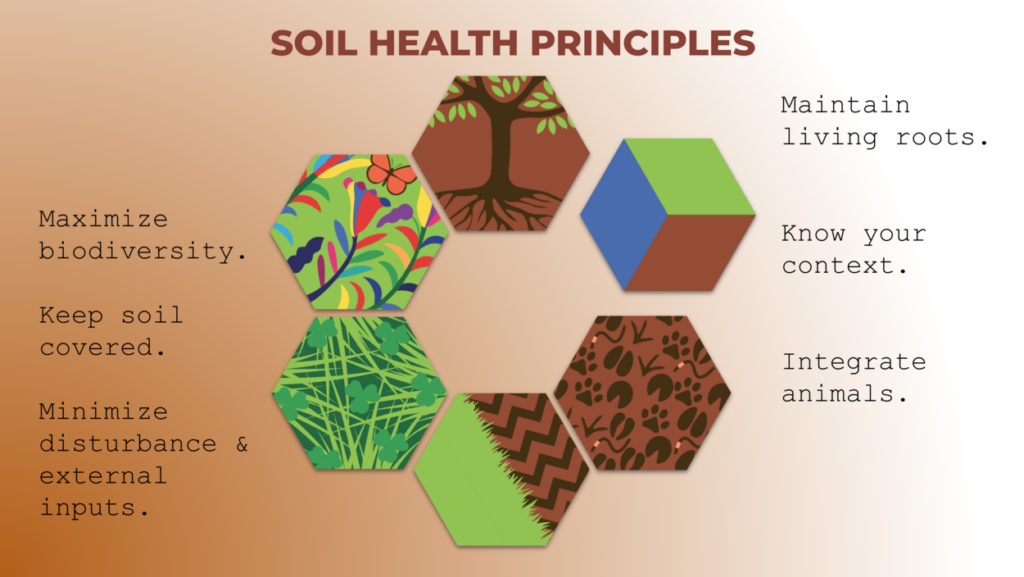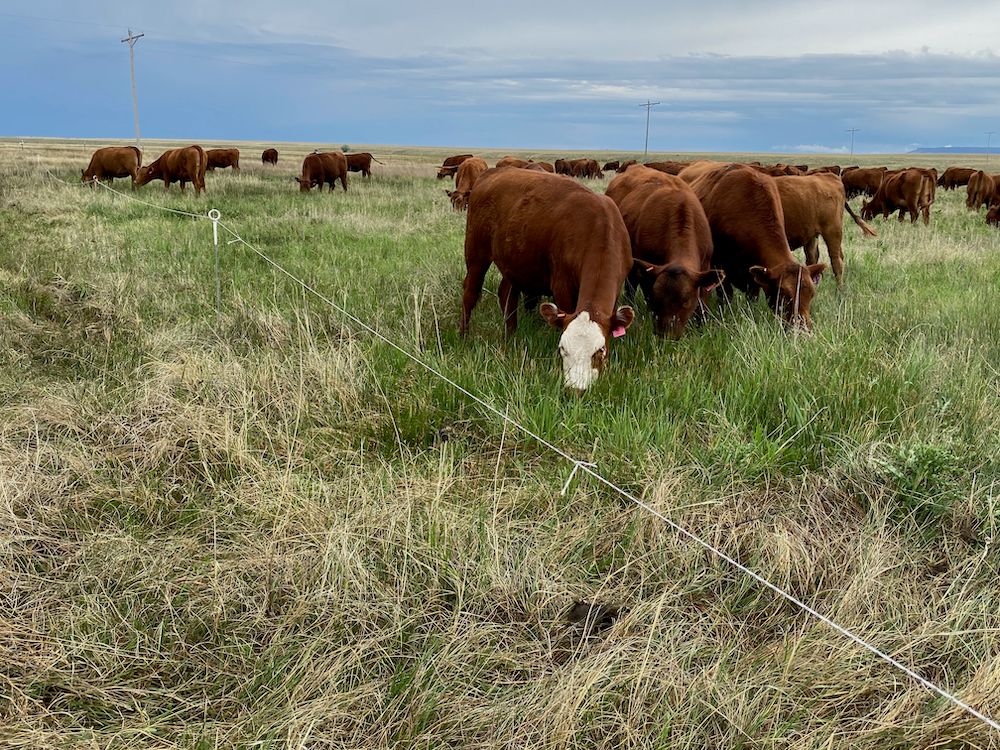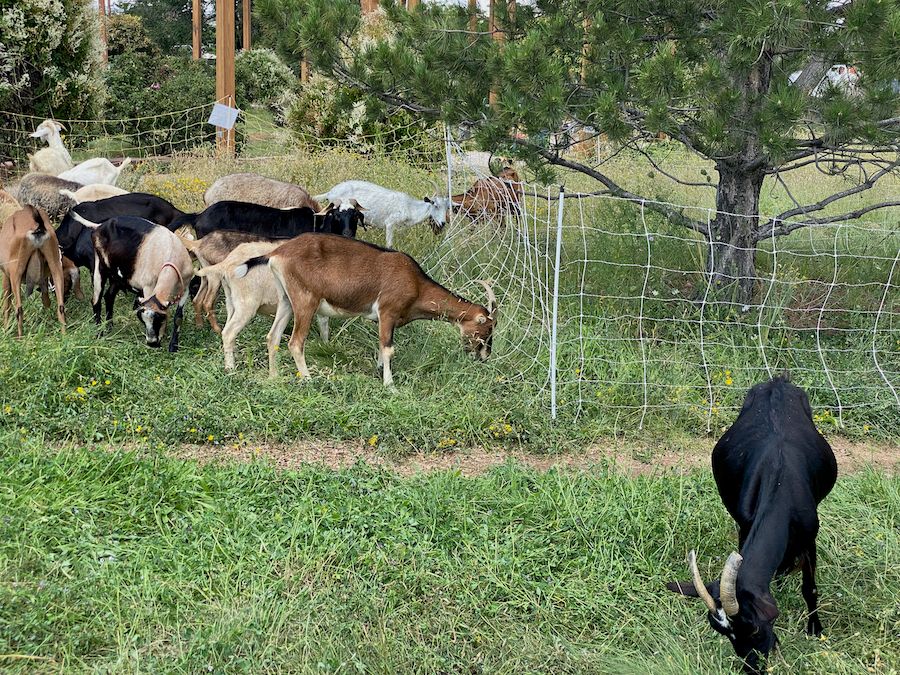About New Mexico Healthy Soil Working Group:
The NM Grazing Exchange is a project by New Mexico Healthy Soil Working Group, a grassroots group that was created in the fall of 2018. It is our mission to achieve rapid adoption of healthy soil principles, resulting in greater ecological and human well being, significant water infiltration, rural prosperity, and climate resilient communities. We support land stewards by offering resources and building coalitions, while creating favorable government policy and raising active awareness in our civil society.
The soil health principles are central to our work:

About the NM Grazing Exchange:
Acknowledging the integral role that grazing animals can play for soil health, we created the New Mexico Grazing Exchange in order to connect livestock producers and those with available forage by providing an interactive map and resources.
Integrating animals in agricultural systems may include community grazing to reduce fire fuels on multiple properties, contract or targeted grazing for vegetation management or simply grazing done by livestock producers with cattle, sheep or goats. In all these cases, infrastructure to allow for grazing has to be considered, including fencing and access to water.

Definitions of Forage Types:
Cover Crops
While cover crops have many benefits for soil health, they can also provide forage for animals. Cover crops increase beneficial soil biota; improve soil structure, moisture, and nutrient content; suppress weeds; and provide habitat for beneficial insects and wildlife.
Crop Residue
Crop residues are materials left in production fields after the crop has been harvested. These residues include stalks and stubble, leaves, and seed pods that can be eaten by animals.
Pasture
Pasture is defined as an enclosed area in order to grow forage and graze animals. Ranchers intensively maintain the health and productivity of their pastures through management practices typically including irrigation.
Rangeland
Rangelands are lands on which the native vegetation is suitable for grazing or browsing by herbivores. Rangeland is less intensively managed than pastures, typically supports more native species, can be open (not enclosed by fencing) and can be grazed by wildlife or livestock.

Disclaimer
New Mexico Healthy Soil Working Group offers this web site as a way for livestock producers and land managers to connect with one another to create mutually beneficial relationships, manage resources, and improve soil health. Use at your own risk.
The information on this website is generated by the users of the service; New Mexico Healthy Soil Working Group is not liable or responsible for misrepresentations of current available grazing sites or livestock herds, nor for grazing agreements that may result from connections made via this website. It is the responsibility of individual users to provide accurate listing information, respond in a timely fashion, and maintain courteous, authentic communication with other users and site administrators. Users should engage with other users honestly and judiciously when making new connections and engaging in any subsequent agreements, either formal or informal.
It is not the purview of the New Mexico Healthy Soil Working Group to monitor or manage user-to-user interactions. Please report listings with inaccurate, outdated, or misleading information to site administrators using the contact form. Administrators reserve the right to deactivate or delete postings that are verified to be inappropriate.